We all know that some of the ingredients in common cleaning products can be harmful to the environment and to our selves. Unfortunately, some of the most highly effective cleaning solutions are highly dangerous to human skin, sensory organs, internal organs and biological systems. While there is more overall awareness of these harmful effects versus the benefits of these conventional cleaning products, you need to understand what these products actually contain, and why they are harmful. The chemicals that are mentioned on their labels are not known all that well, however, this knowledge is really important.
After all, how can you choose a product that is green and not harmful to health without knowing which ingredients to avoid?
So let’s discuss these common chemicals which can be found in most cleaning products available around you, as well as their adverse effects so that you can make better decisions for your health and the environment.
- Phthalate -, also known as a plasticiser, Phthalate is the most common chemical in almost all the household cleaning products that you use. From washing soap to detergents to glass cleaner, almost everything that has some kind of fragrance is due to this chemical. They don’t mention it directly on the product label, but if you can see fragrance mentioned, it most likely contains phthalates.
Adverse effects – early studies have shown that phthalate intake through diet and skin contact can damage the liver, kidney, lungs and reproductive system. - Lye – Lye is the basic ingredient found in oven cleaners and drain openers. It contains sodium hydroxide and potassium hydroxide.
Adverse effects – Lye is highly corrosive and can burn your skin or eyes. It can also damage tissues. - 2-Butoxyethanol – It is found in most of the kitchen cleaners, dry-cleaning liquids and some liquid hand-soaps Adverse effects – This chemical can be absorbed through the skin and is an irritant to skin. Long-term exposure can destroy red blood cells which carry oxygen around the body.
- Sodium Hypochlorite – This chemical is found in most of the toilet cleaners. Adverse effects – It can cause redness or irritation on skin and eyes. Long exposure can make skin insensitive. It is also poisonous to water-based organisms once it is flushed down the toilet.
- Ammonia – It is found in the polishing agents for bathroom fittings and in almost every conventional glass cleaner. Adverse effects – It is an irritant for asthmatic people and the elderly and can cause lung diseases and breathing problems. If mixed with bleach, it can create highly toxic chlorine gas.
- Chlorine Bleach – This antimicrobial chemical is the major ingredient of mildew cleaners, toilet cleaners and tiles or slab cleaners. Adverse effects – Chlorine bleach fumes can cause coughing and sore throat. It can also cause redness and irritation on the skin after repeated exposure.
- Sodium Lauryl Sulphate – SLS is the chemical that creates the foamy, bubbly lather in shampoos, hand soaps, detergents etc. Adverse effects – It can be very irritating to eyes, mouth and skin. SLS strips natural oils from your skin, which can cause dermatological problems.
- Triclosan – Triclosan is found in most of the liquid dishwashing detergents and hand soaps, which are labelled as anti-bacterial. Adverse effects – Triclosan is an aggressive antibacterial agent and it can promote the growth of anti-drug resistant bacteria. Also, it is very toxic to algae and good bacteria when drained into water bodies.
- Quarternary Ammonium Compounds – They are found in the household cleaners and fabric softeners. Adverse effects – These compounds can cause mild skin and respiratory irritation. They can also trigger asthma symptoms if you are asthmatic.
- Sodium Hydroxide – It is found in toilet cleaners, drain cleaners, oven cleaners and drain openers. Adverse effect – It is extremely corrosive and can burn your skin or eyes if touched directly.
- Perchloroethylene – It is found in carpet cleaners, upholstery cleaners and spot removers. Adverse effect – Dizziness and loss of coordination.
